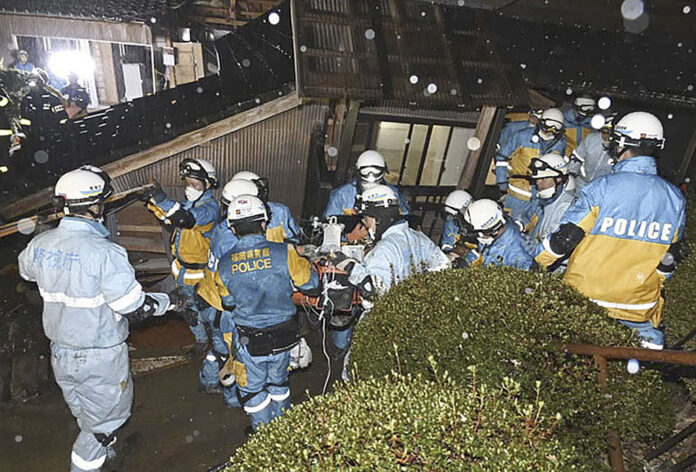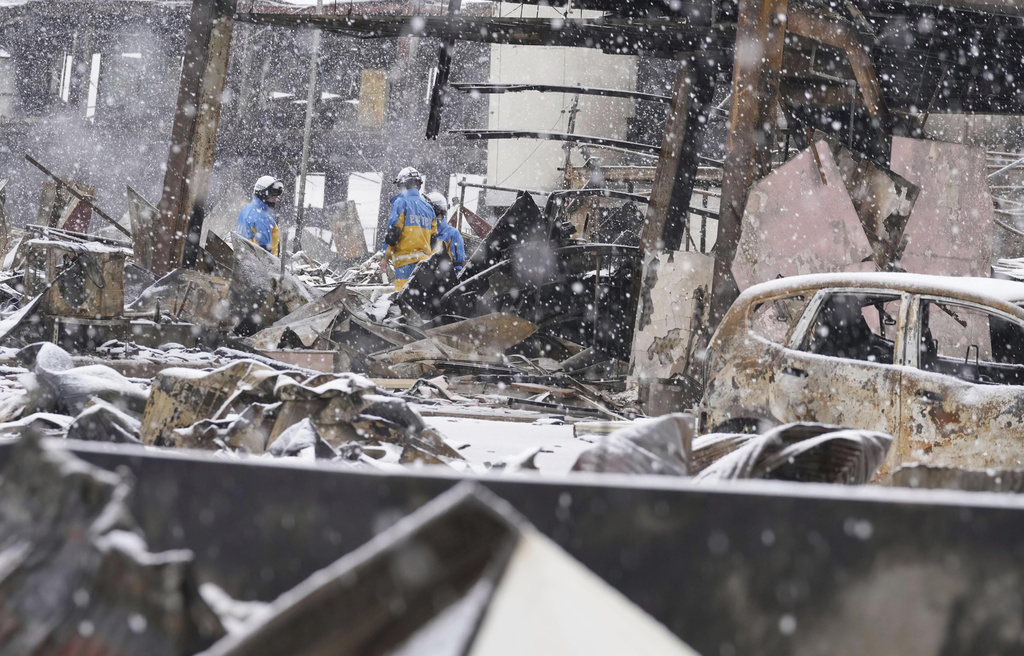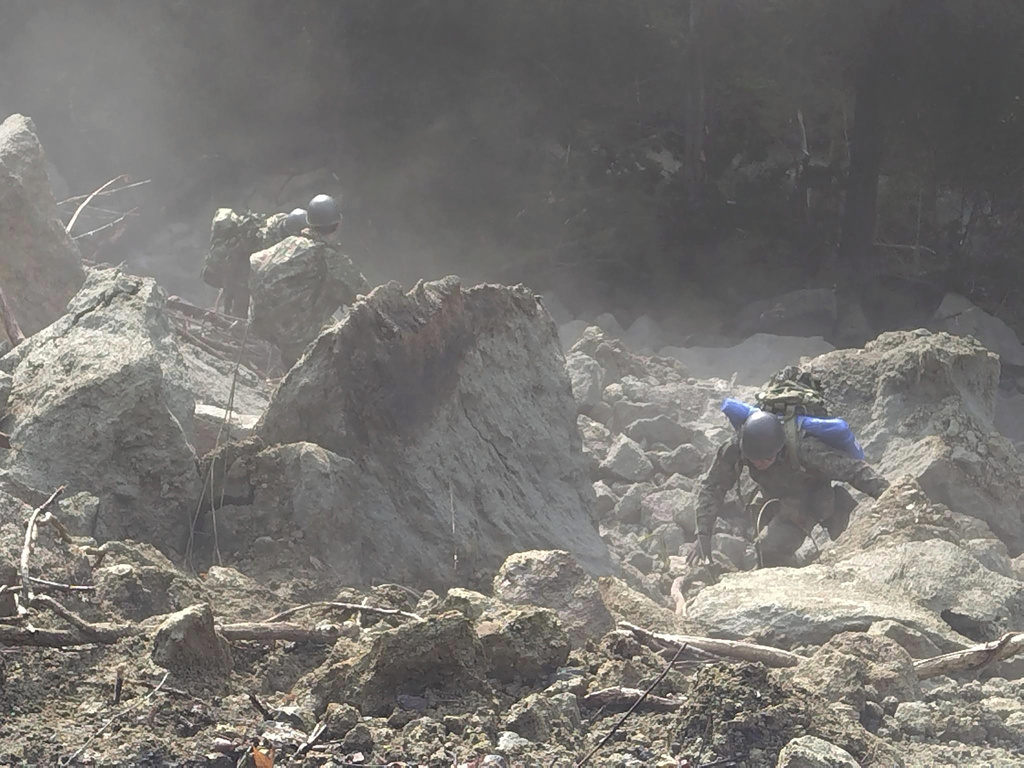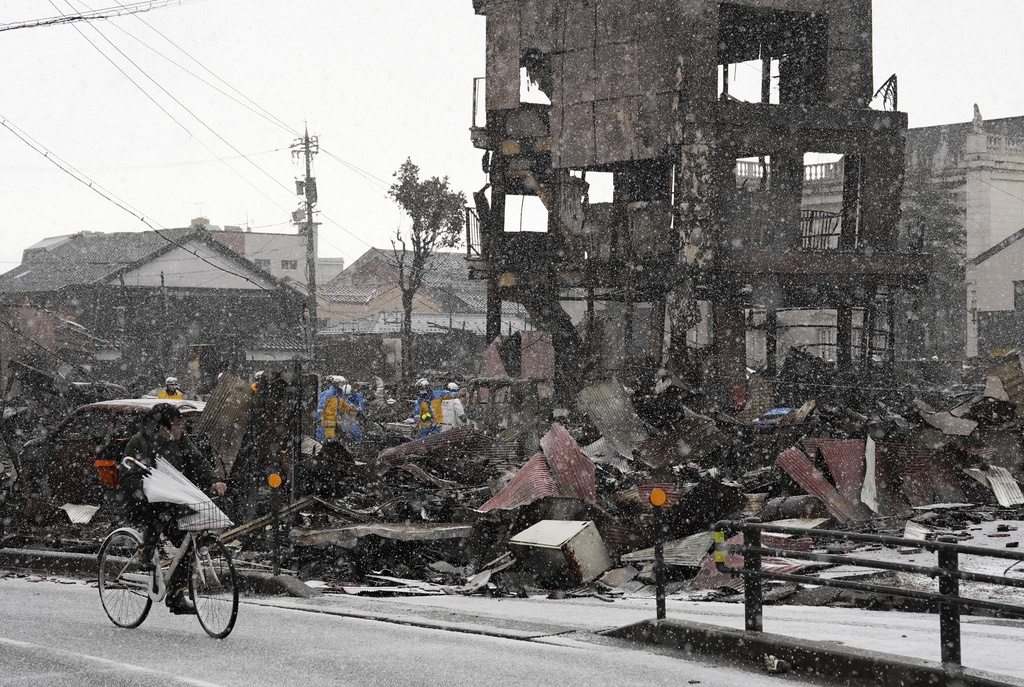
WAJIMA, Japan (AP) — A woman in her 90s was pulled alive from a collapsed house in western Japan late Saturday, 124 hours after a major quake slammed the region, killing at least 126 people, toppling buildings and setting off landslides.
The woman in Suzu city, Ishikawa Prefecture, had survived for more than five days after the 7.6 magnitude quake that hit the area Monday. Nationally broadcast news footage showed helmeted rescue workers covering the view of the area with blue plastic, and the woman was not visible.
Chances for survival diminish after the first 72 hours. Several other dramatic rescues have been reported over the past few days as soldiers, firefighters and others joined a widespread effort.
Among the 126 dead was a 5-year-old boy who had been recovering from injuries he suffered when boiling water spilled on him during Monday’s 7.6 magnitude earthquake. His condition suddenly worsened and he died Friday, according to Ishikawa prefecture, the hardest-hit region.
Rescue teams worked through snow to deliver supplies to isolated hamlets. Heavy snowfall expected in Ishikawa Prefecture later Sunday and through the night added to the urgency.

After Monday’s 7.6 magnitude temblor, 222 people were still unaccounted for, and 560 people were injured. Hundreds of aftershocks have followed, rattling Noto Peninsula, where the quakes are centered.
Taiyo Matsushita walked three hours through mud to reach a supermarket in Wajima city to buy food and other supplies for his family. The home where he lives with his wife and four children, and about 20 nearby homes, are among the more than a dozen communities cut off by landslides.
Power was out, and in a matter of hours, they couldn’t even use their cell phones, he told Jiji Press.
“We want everyone to know help isn’t coming to some places,” Matsushita was quoted as saying by Jiji Press. “We feel such an attachment to this community. But when I think about my children, it’s hard to imagine we can keep living here.”
Ishikawa officials say 1,370 homes were completely or partially destroyed. Many of the houses in that western coastal region of the main island are aging and wooden. Cars lay tossed on cracked, bumpy roads. Snow blanketed the debris and highways. Wires dangled from lopsided poles.
The more than 30,000 people who evacuated to schools, auditoriums and community facilities slept on cold floors. They trembled in fear through the aftershocks. They prayed their missing loved ones were safe. Others cried softly for those who had died.
Some people were living out of their cars, and long lines formed at gas stations. Food and water supplies were short. Worries grew about snow and rainfall, which raise the risk of mudslides and further damage, as snow collecting on roofs can flatten barely standing homes.
A fire that raged for hours gutted a major part of Wajima, and a tsunami swept through homes, sucking cars down into muddy waters.
Wajima city has recorded the highest number of deaths with 69, followed by Suzu with 38. More than 500 people were injured, at least 27 of them seriously.

The temblors left roofs sitting haplessly on roads and everything beneath them crushed flat. Roads were warped like rubber. A fire turned a neighborhood in Wajima to ashes.
More than 200 people were still unaccounted-for, although the number has fluctuated. Eleven people were reported trapped under two homes that collapsed in Anamizu.
For Shiro Kokuda, 76, the house in Wajima where he grew up was spared but a nearby temple went up in flames and he was still looking for his friends at evacuation centers.
“It’s been really tough,” he said.
Japan is one of the fastest-aging societies in the world. The population in Ishikawa and nearby areas has dwindled over the years. A fragile economy centered on crafts and tourism is now more imperiled than ever.

In an unusual gesture from nearby North Korea, leader Kim Jong Un sent a message of condolence to Japanese Prime Minister Fumio Kishida, the official Korean Central News Agency reported Saturday.
Japan received messages earlier expressing sympathy and promises of aid from United States President Joe Biden and other allies.
Japanese government spokesperson Yoshimasa Hayashi told reporters that Japan was grateful for all the messages, including the one from North Korea. Hayashi said the last time Japan received a condolence message from North Korea for a disaster was in 1995.
______
















































